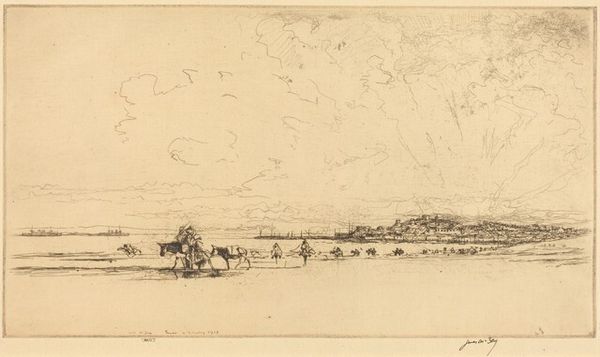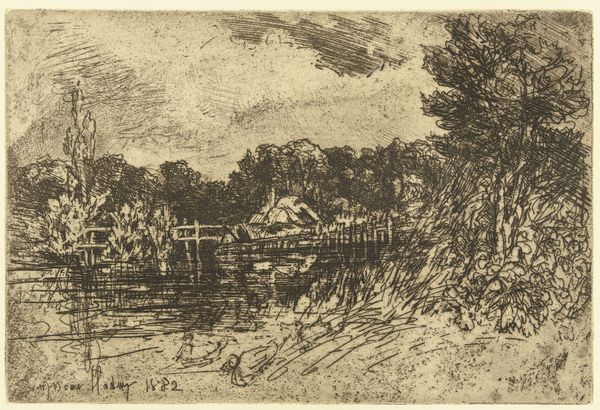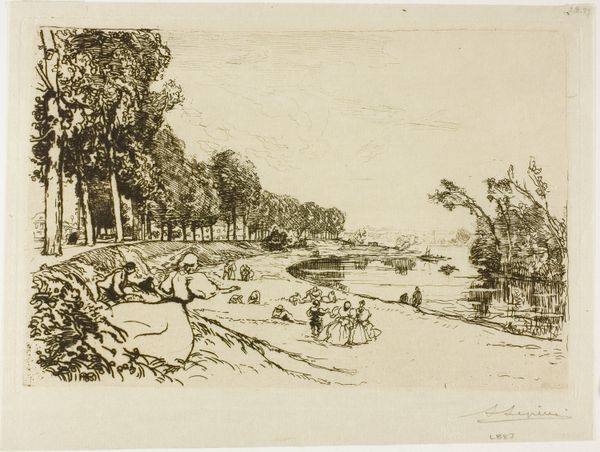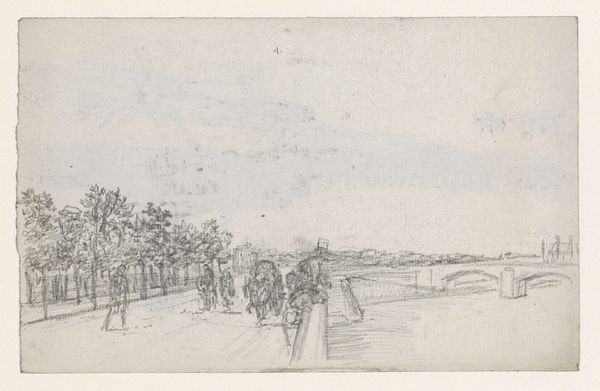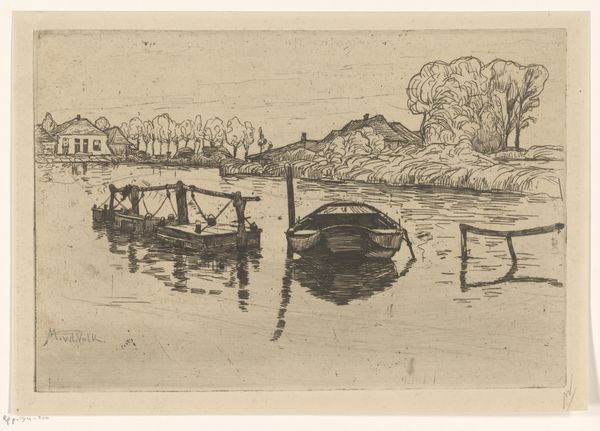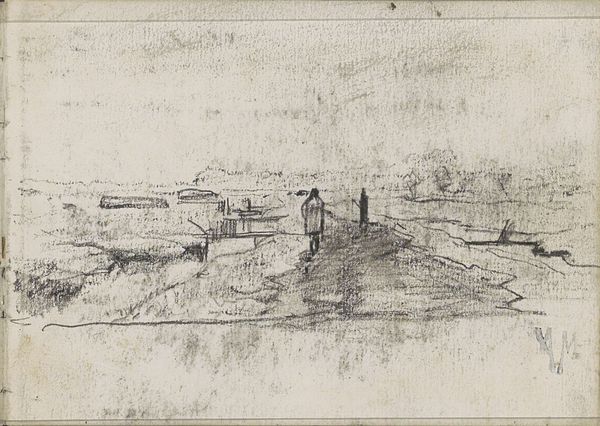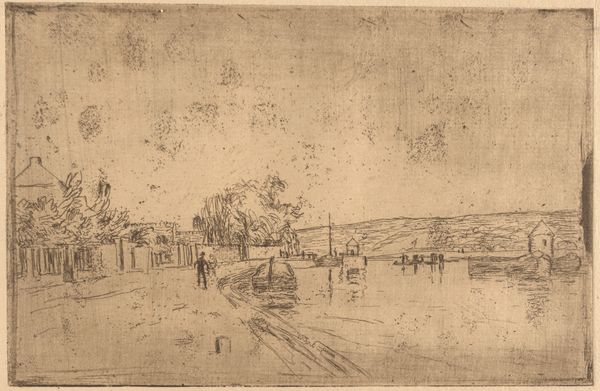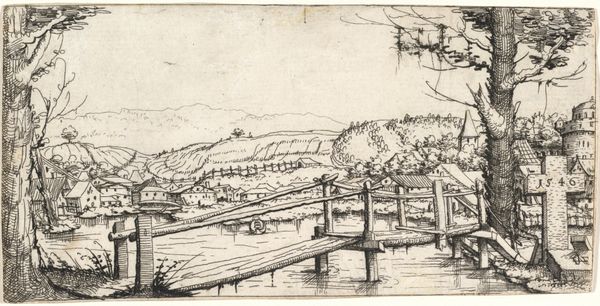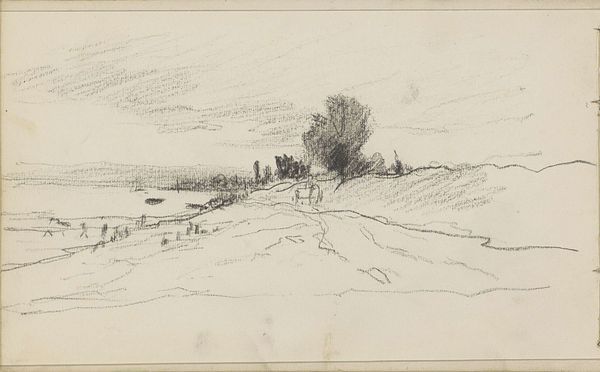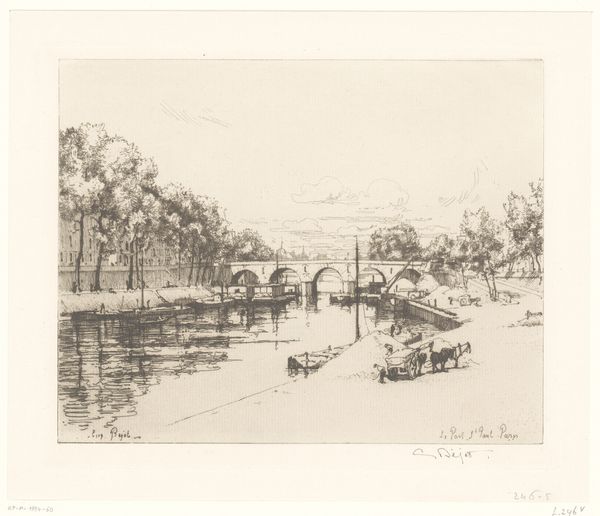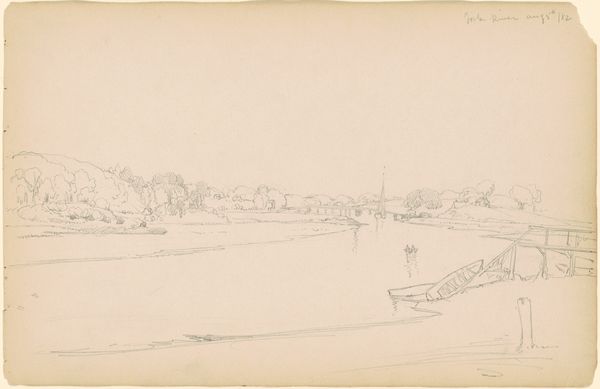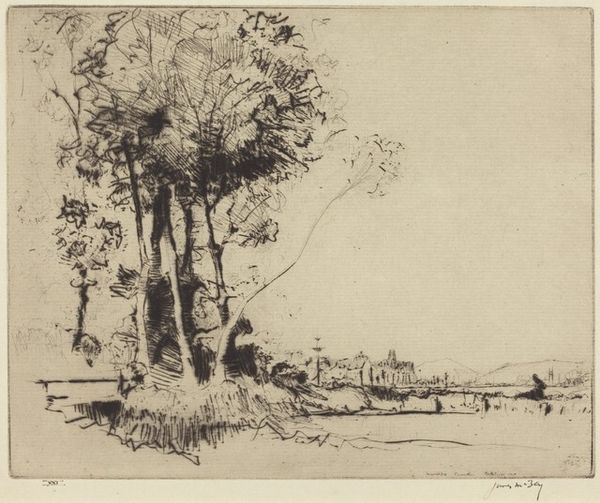
Dimensions: height 162 mm, width 264 mm
Copyright: Rijks Museum: Open Domain
Editor: This is Sir Francis Seymour Haden’s "De Amstel," likely from 1879. It's an etching in ink depicting a riverside scene. I’m struck by the emphasis on the texture created by the etching, it's almost gritty. What's your take on this piece? Curator: This etching highlights the labor inherent in printmaking. The lines, the cross-hatching, aren't just descriptive; they’re evidence of a physical process. Consider the materials: the copper plate, the acid, the ink, the paper. The artist’s hand, guided by tools, transforming raw material. The very existence of this print speaks to a democratized art form, making art accessible to a wider consuming public than traditional painting allowed. Notice how Haden is engaging with the Amstel not just as a pretty scene, but also showing wood and logging industry in action. Where do you see those tensions reflected in the composition itself? Editor: I guess I see it in the foreground; the wood haphazardly arranged. It feels very functional and disrupts any serene reading of the landscape. Curator: Precisely! It reminds us of the exploitation of resources, the labour required to produce the things we often take for granted. Also note the scale and repeatability of printmaking-- this can be infinitely reproduced, democratizing art, while still displaying highly specialized labour. And let's consider what would someone do with this work of art: probably collect it and place it into their album, therefore making them a sort of collector, or even artist of sorts. It could be added to personal sketchbooks too. How does thinking about this production process and eventual uses influence your interpretation of the scene depicted? Editor: It definitely makes me consider the unseen labor that goes into even the most picturesque scene. I hadn't really considered the consumer's role either! Curator: It’s a reminder that art doesn't exist in a vacuum. The making of art is just as important as its final form and the hands that encounter it after that point too!
Comments
No comments
Be the first to comment and join the conversation on the ultimate creative platform.
